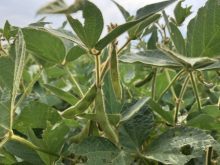For the millions of cows, pigs and chickens raised in Saskatchewan, you expect there would be little left to discover about their feed.
But you’d be wrong.
“We actually know very little about how processing affects the digestibility and availability of nutrients from crops for farm animals,” said professor Bernard Laarveld of the University of Saskatchewan’s College of Agriculture and Bioresources.
That lack of knowledge about feed is about to change.
The Canada Foundation for Innovation recently gave $5 million to establish the Feed Technology Research Facility. The $12.6 million facility will be a state-of-the-art pilot plant for feed manufacturing, Laarveld said.
Read Also

No special crop fireworks expected
farmers should not expect fireworks in the special crops market due to ample supplies.
Producers may already be familiar with some feed processing techniques like grinding, pelleting and extruding. But the soon-to-be-constructed facility will be different because the researchers will have precise control and monitoring.
“We can link this (monitoring and control) with our measurements of chemical composition and structure of the diet,” Laarveld said.
Precise measurements will be made with the university’s synchrotron.
“It’s all about generating high quality feed and value-added feeds that have proven, reliable and predictable performance characteristics in animals,” he said.
Damaged crops will also be studied at the new facility. Laarveld said economic impact studies show that five to six million tonnes of weathered or damaged crops are produced every year in Saskatchewan.
“But we have shown that with processing, you can add significant value.”
The new facility will also do feed research related to Saskatchewan’s nascent ethanol and biodiesel industries. These industries are expected to produce 1.5 million tonnes of canola meal and 800,000 tonnes of distillers dried grains, or DDGs, and solubles annually in the province, Laarveld said.
“How can you take these enormous quantities of DDGS and process those into high-value feeds that are useful to the livestock sector?”
The goal is to add value to these byproducts so they can be sold for export as high quality feed for cattle.
The Canada Foundation for Innovation also awarded $5.8 million toward the creation of a different project whose focus is rural health.
The National Agricultural Industrial Hygiene Laboratory will be used to study the health of about one million workers and other rural people who are exposed to risks associated with modern agricultural production, said a News release
news.
The health research that the laboratory generates will be transmitted to rural communities across the country, said spokesperson Maura Gillis-Cipywnyk.
“It’s broader than just the farmer. It really encompasses the whole rural community,” she said.
The laboratory will focus on four main themes: food and water quality, rural health, working conditions and air quality.














